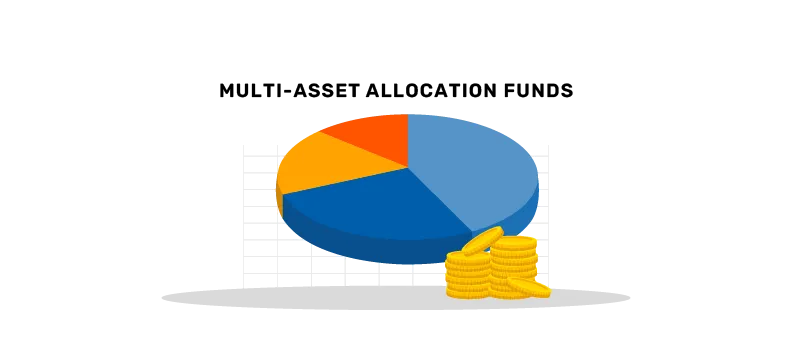
Volatility is an inextricable part of the financial markets. Investors seeking to tap into the growth potential of the market need to contend with uncertainty, price fluctuations and other risks. Balancing risk and reward, thus, is a key aspect of investing. This is where portfolio diversification can play a crucial role.
Diversify your mutual fund portfolio across asset classes
Portfolio diversification involves spreading investments across many assets. The goal is to reduce risk by not depending on the performance of one or a few securities.
Diversification can be achieved within one asset class – such as stocks – which is a strategy adopted by equity mutual funds. However, such a portfolio is still vulnerable to fluctuations affecting equities as a whole.
Another way to achieve even broader diversification, and thereby, better potential risk mitigation, is to invest across asset classes. Such a portfolio comprises stocks as well as bonds, commodities, and real estate. It could also be diversified across different sectors, industries, and geographic regions.
Diversifying across assets
One way to achieve such diversification is through hybrid mutual funds. These funds combine stocks and bonds in their portfolio. The equity portion offers capital appreciation potential, while the debt portion seeks to provide relative stability. The allocation ratio depends on the fund category. Aggressive hybrid funds, for instance, skew more towards equity. Conservative hybrid funds have a debt-heavy portfolio. Balanced hybrid funds, meanwhile, invest between 40% and 60% of their portfolio in debt and equity each.
A unique hybrid fund category that seeks to offer even broader diversification is multi-asset allocation funds. Such funds combine at least three asset classes in their portfolios – typically equity, debt and gold or real estate – with a minimum 10% allocation to each. Multi-asset allocation funds seek to tap into the unique opportunities offered by each asset class in different market conditions while hedging against the risks posed by a single asset type.
Asset class correlation
At the heart of diversification lies the principle of asset class correlation. Asset classes, such as equities, fixed income, commodities, and real estate, tend to behave differently under varying market conditions.
For example, equities tend to soar during a bull run, while debt tends to offer stability during volatility.
This relationship between two asset classes is known as correlation. A high correlation indicates that two asset classes move largely in tandem, whereas a low correlation indicates that they move in different directions.
By spreading investments across multiple asset classes with low correlation, investors can reduce the overall risk of their portfolios. For instance, during a stock market downturn, the value of bonds or gold might remain stable or even increase, providing a cushion against losses from equities.
Dynamic management
Apart from diversification, some hybrid mutual funds-including multi-asset allocation funds and balanced advantage funds – also offer the advantage of dynamic portfolio management. This means that the fund manager, based on their discretion and economic trends, has the flexibility to rebalance the portfolio as per changing market conditions.
In times of economic expansion, the fund manager may increase exposure to equities to capitalise on growth opportunities. During market downturns or heightened volatility, the allocation may shift towards safer assets like bonds or cash equivalents to seek potential capital preservation. This can give portfolios the ability to potentially mitigate risk in various market cycles.
To sum up, financial markets are inherently unpredictable. Risk management, therefore, is an important part of an investment strategy. Diversification across asset classes can be a strategic way to mitigate risks while leveraging the opportunities offered by different investment avenues in different market conditions. It can help build all-weather mutual fund portfolio that can help investors potentially achieve their long-term financial objectives. Investments in hybrid mutual funds can be done via lumpsum or in regular instalments through a Systematic Investment Plan (SIP) depending on an investor’s convenience.
Mutual Fund investments are subject to market risks, read all scheme related documents carefully.

[…] Also Read: Diversifying by asset class can help build an all-weather mutual fund portfolio […]
[…] Also Read: Diversifying by asset class can help build an all-weather mutual fund portfolio […]
[…] Also Read: Diversifying by asset class can help build an all-weather mutual fund portfolio […]